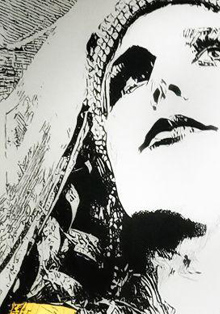From tomorrow until 15 January, Casa Árabe in Madrid is presenting the exhibition Baghdad, a modern place (1958-1978) in its Sala de Columnas, as part of the Football for Hope cultural programme being held in parallel to the Qatar 2022 Football World Cup, a twinning with the major exhibition also being presented in parallel to the World Cup by the Museum of Islamic Art in Doha, under the title Baghdad: delight for the eyes.
The exhibition is curated by the Spanish architect Pedro Azara with funds from the collection of the Arab Image Foundation in Beirut, and has been loaned by La Virreina Centre de la Imatge in Barcelona, the organisation that presented the exhibition last summer. The exhibition presents almost a hundred black and white images from the 1950s, 1960s and 1970s taken by the renowned Iraqi architect Latif Al Ani, which constitute a highly valuable testimony to the Iraqi capital’s aspirations for modernity and development in the wake of the discovery of oil.
Latif Al Ani is arguably the most important Iraqi photographer to date. Active from the 1950s to the late 1970s, his photographs portrayed a country and a society that was urbanising, without ignoring the traditional character of ways of being and acting that were affected by the rapid changes that took place during this period. On many occasions he resorted to irony, showing the first wealthy foreign tourists from outside the country posing in front of the ruins of the past, turned into a stage set or a hunting trophy.
With Saddam Hussein’s rise to power and the devastating war between Iraq and Iran in 1980, Latif al-Ani was banned from taking photographs in the public space. His name and work disappeared, as did the public archives, destroyed during the bombing of Baghdad in 2003. Some, however, donated to the Arab Image Foundation in Beirut, after the mediation of the Moroccan photographer Yto Barrada, have been saved.







